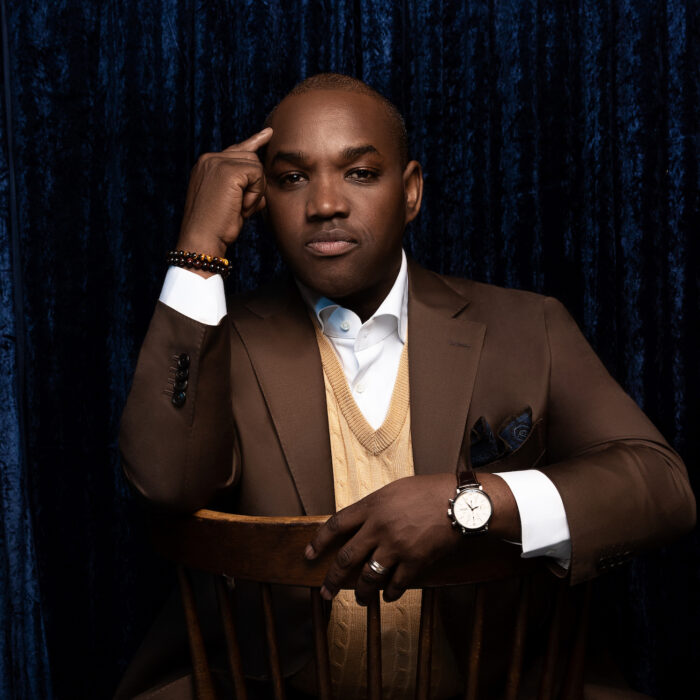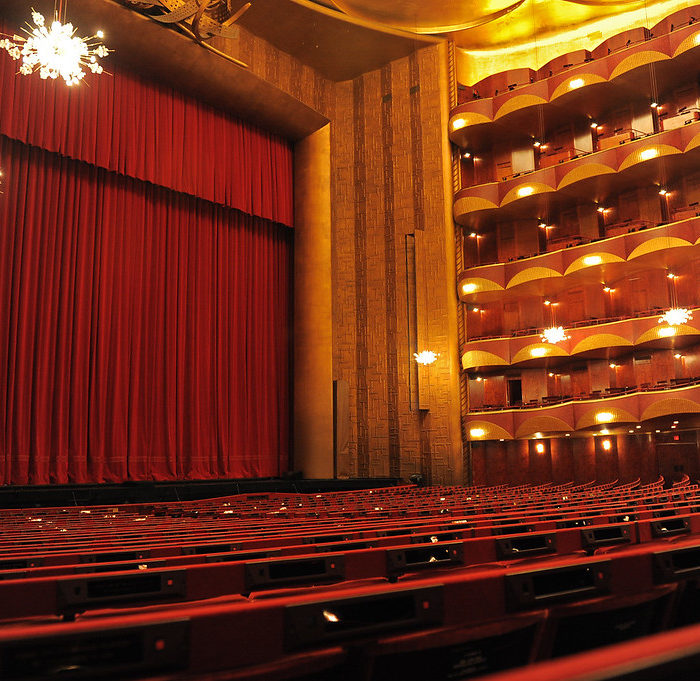
Opera Meets Film: Zhang Yimou & Zubin Mehta’s ‘Turandot At The Forbidden City’
By John VandevertWhat does an unfinished opera have in common with a historical landmark, Chinese cultural history, thousands of singers, eloquent music, and expert dramaturgy? In 1998, just like Wagner’s trilogy, these disparate elements come together to form a work of epic proportion in Zhang Yimou and Zubin Mehta’s collaborative project, “Turandot at the Forbidden City.” In this article, we will explore this masterwork of cinematic-operatic synthesis; some interesting information about the history of the eponymous city; and much more. Buckle in for a tale full of living history.
A Little Bit of Backstory
Let us talk about Yimou’s project. Having made his directorial debut 10 years prior with the film, “Red Sorghum,” based on Mo Yan’s eponymous novel (1986), his next film, “Ju Dou” (1990), dealt with the complexities of trauma, honor, and culture. After the two films gained exceptional popularity and accreditation, throughout the 1990s Yimou’s creativity would take many different forms and move in a variety of directions. During this time he told stories concerning the crude nature of life in China (Keep Cool, 1997) and the discrepancies of opportunity and freedom (Not One Less, 1999). Despite having limited experience in the classical music world, Yimou’s operatic debut would take place within this milieu.
Technically speaking, Yimou’s participation in this project was not entirely his idea. The idea for a new production of Puccini’s “Turandot,” his great unfinished opera, actually came from Indian conductor Zubin Mehta. He was already famous at that time for both his artistic and diplomatic work, where he showed solidarity with the Israeli victims of the 1967 Arab-Israeli War; a war whose impact on innocent Israeli lives is still felt today. In 1997, Mehta decided to launch a new production, choosing the Beijing palace complex known as the Forbidden City as its venue. To do this properly, and avoid cliches and stereotypical imagery, he desired to collaborate with a Chinese director. This is where Yimou came in.
Totaling at $15 million dollars to produce, the opera was (and remains) one of the most expensive operas to have been produced in recent history. The production attempted to generate domestic interest as well as garner foreign intrigue, serving as a merger of the worlds. It was ambitious in the extreme, but brilliantly executed: Mehta noted in an interview that, considering that the piece was performed outdoors, the sound engineers were more than competent. Yimou noted in a press conference that through this project he had hoped to create an atmosphere of “spiritual and emotional exchange.” At the time, politically speaking, Bill Clinton had just visited the People’s Republic of China (PRC) to promote American values, resulting in China signing the ICCPR, or the International Covenant on Civil and Political Rights. A spirit of diplomacy infused the entire project: a project that has not been repeated on any comparable scale since 1998, both in terms of budget and international collaboration.
While Yimou would reprise the “Forbidden City version” of “Turandot” in October 2009, referred to as “Turandot No. 2,” it was not to the same level as the first iteration both in terms of scale, performance dramaturgy, and vocal quality. In 1998 audiences were treated to no less than three Turandots (Giovanna Casolla, Audrey Stottler, and Sharon Sweet), three Calafs (Kristján Jóhannsson, Sergej Larin and Lando Bartolini), and 1,000 chorus members, dancers, and supers, who all filled out the opera’s many elements. Speaking on the opera’s symbolism, Zhang Yu, Executive Producer of the China Performing Arts Agency, clarified that Puccini’s opera “underscores the correctness of China’s policy of opening up to the outside world.” For what it meant in the socio-political milieu of the moment, the project was a landmark, and it has left a unique legacy in the annals of operatic history
China’s “Forbidden City”
But what is the location that Yimou chose for Puccini’s “Turandot,” exactly? Why is an entire city sectioned off? Dubbed the Forbidden City, this 54-acre palace complex is a relic of China’s imperial past and a testament to the enduring legacy of the Ming Dynasty (1368-1644). In the late 14th century, China was undergoing dramatic change, with the previous Mongol-led Yuan Dynasty having collapsed due to internal revolt. In an attempt to secure China’s state infrastructure, recentralize power, and fully scrap Mongol influence, various steps were taken to prove the validity of Zhu Yuanzhang (Hongwu) as ruler. Following Hongwu’s death, his son Zhu Yunwen (Jianwen) became the next ruler. Although it was shaky at the beginning, it became regarded as the Dynasty’s “second founding.” Under Jianwen many developments occurred, one of them being the establishment of a new capital of power in 1403: Beijing, otherwise called the Imperial City. Within in the Imperial City laid the luxurious abode of the emperor, the imperial family, their attendants, and other officials. This new palace was dubbed the Forbidden City.
Construction began in 1406 and was completed in 1420. The area came to enclose 40 buildings, from various ceremonial halls, to studies, kitchens, living spaces, training grounds, gardens, large plazas, throne rooms, and various types of altars and places of worship. Despite the inordinate grandness and opulence of the Forbidden City, at the time the Dynasty’s economy was relatively strong and would only grow increasingly so towards the end of the 17th century, thanks to the “sprouts of capitalism.” The enclosed “city within a city” was therefore both a symbol of imperial authority, control, and divine validation, as well as China’s overall civilizational development. Depictions of the Forbidden City in artistic expressions and aesthetic choices, both at the time and in later decades, developed the alluring mythos of the secluded space and its spiritual and philosophical ethos. The layout of several buildings hold celestial allusions, while color choices and external features correspond to various types of symbolism and representation of power.
The significance and historical influence that the Forbidden City played (and continues to play) in Chinese history cannot be overstated. Following the various wars of the 19th-early 20th centuries between the Anglosphere and the Qing Dynasty—China’s last imperial dynasty—the Forbidden City ceased to be officially used for state purposes in 1924. Labeled a UNESCO World Heritage Site in 1987, the city still stands as an icon for both Chinese and international history: much like the opera itself. There are many operas that feature imperial China, though they are not all well-known today. Such operas include Tan Dun’s “The First Emperor” (2006) and Lei Lei’s “Xi Shi” (2009). Peter Sellars’ “The Peony Pavilion” (1998), though avant-garde, is based on the 16th-century Ming Dynasty play that incorporates Ming theming into a story set in the Southern Song Dynasty (960-1279). However, non-imperial but China-inspired operas, such as John Adams’ “Nixon in China” (1987), often have more renown.
Opera in the Forbidden City
“Turandot” is not the only opera, nor the only Western classical music piece, to have been performed in the Forbidden City. In 1998, the same year as this staging of “Turandot,” Carl Orff’s secular-sacred cantata, “Carmina Burana,” was performed to celebrate the 120th anniversary of Deutsche Grammophon. President Dr. Celmens Trautmann noted a peculiarity in the historical merger between the Bavarian source material and the Forbidden City, namely that the former “came into existence roughly at the same time as the Forbidden City was built in the 14th century.”
Outside of Orff, Peking opera is routinely performed at the venue, the annual Spring Festival in 2010 being a recent and particular highlight. More recently still, three Chinese opera troupes, namely the Tangshan Pingju Opera Company; the Jingju Theatre Company of Beijing; and the Northern Kunqu Opera Theatre, hosted a collective performance at the Forbidden City, in the Concert Hall. This is a modern building constructed by the Japanese in 1942, with its amphitheater added in 1980. Itself designated as UNESCO Intangible Cultural Heritage of Humanity, Peking opera has featured in Western opera, most notably in Huang Ruo’s 2022 adaptation of David Hwang’s 1988 play, “M. Butterfly,” itself based on Puccini’s 1904 opera of similar title.
It is easy to see the role that opera plays in the cultural heritage of China, and the unique role that the Forbidden City plays as a venue for opera and classical music of both Western and non-Western orientations. Interestingly, outside of “Turandot,” Yimou also aided in the production of “Tosca” to mark the beginning of China’s first official opera festival: a 79-day event featuring a total of 13 operas by 10 companies totalling over 2,000 participating performers. Involving three domestic opera companies, the joint production of “Tosca” demonstrated once again how vital collaboration is for the continuation of the operatic art form. The 2009 festival inspired a 2022 repeat, though the latter was more reduced in scale.
Within the cinematic realm, one of the more opera-focused films to feature the city by name is the Huangmei opera film, “Inside the Forbidden City” (1965). It is a film largely unknown to Western audiences due to being entirely in the Chinese language. On the more architectural side, the opera house on the palace’s grounds, named Yueshilou, was once the home of the emperor, his wife, and concubines. Opera within the Forbidden City is multi-dimensional and spans time and space: the overarching theme, however, is one of shared cultural expression. This can be found wherever you look, and the Forbidden City expresses this for Chinese and international audiences alike. Opera and classical music’s place in the city is one of diplomacy, friendship, peace, artistic expression, and a defense of cross-cultural fraternity in the face of difficulty.


